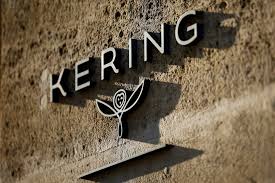
French luxury conglomerate Kering is preparing to divest its relatively nascent beauty division to the beauty powerhouse L’Oréal in a transaction valued at approximately $4 billion. The decision—which signals a major pivot in Kering’s corporate strategy—reflects mounting pressure on its flagship fashion business, a swollen debt burden and a desire by incoming CEO Luca De Meo to streamline operations and focus the group’s resources on fashion.
From Build-out to Sell-down
Just two years ago, Kering had committed to building a vertically integrated beauty platform. In 2023 it acquired the high-end fragrance brand Creed for some €3.5 billion in cash and launched a dedicated beauty division under its control. That move departed from Kering’s prior model, in which it licensed fragrances and cosmetics to third-party specialist groups. The rationale at the time: capture higher margins, control brand halo and extend the luxury ecosystem across perfumes and skincare.
In a sudden reversal, Kering now appears to be selling that very beauty arm to L’Oréal, which will not only acquire Creed but also secure the rights to develop beauty products linked to Kering’s fashion labels such as Bottega Veneta, Balenciaga and Alexander McQueen. The transaction underlines a decisive strategic course correction.
A major driver behind the divestiture is Kering’s elevated net debt, reported at around €9.5 billion by mid-year. With luxury sales under pressure—particularly at its largest brand, Gucci—and macro headwinds (chiefly weaker demand in China), the company finds itself squeezed on multiple fronts. De Meo’s appointment as CEO in September carries a mandate to turn around the business. Off-loading the beauty unit delivers an immediate capital injection, sharpens the group’s focus and signals to investors a willingness to prioritise debt reduction and operational discipline.
Beauty Market Realities & Strategic Fit
From L’Oréal’s vantage point, the acquisition is a calculated expansion of its luxury footprint. The Creed brand brings high-end fragrance credentials and opens access to the premium perfumery segment. Moreover, the opportunity to embed beauty lines across fashion labels owned by Kering unlocks cross-category potential: leveraging fashion brand equity, global distribution and the beauty specialist’s production capabilities.
For Kering, the decision reflects a recognition that building a standalone beauty business is more complex, costly and risky than anticipated. The luxury beauty arena is crowded, highly competitive and requires deep R&D, marketing scale and global infrastructure. By contrast, Kering’s core competence remains fashion—leather goods, apparel, high-margin accessories—and the company appears to accept that partnering rather than operating internally may be the wiser route in beauty.
Although the deal is not yet formally announced, multiple sources indicate advanced negotiations with L’Oréal and suggest that a final agreement could be imminent. The valuation in the region of $4 billion (around €4 billion) is consistent with prior reports and reflects both the carrying cost and future growth potential of the beauty assets.
Timing is also strategic. The luxury goods sector has entered a phase of decelerating growth, particularly in major markets like China and the U.S., while consumer behaviour shifts toward experiential luxury and sustainability. Kering’s decision to act now, rather than later, may preserve value for the beauty unit while allowing it to avoid the prolonged drag of building scale under tougher conditions. Meanwhile, De Meo inherits a business that needs clarity—this divestiture serves as one of his early signature moves.
Implications for Kering’s Portfolio Strategy
With the beauty unit likely to exit, Kering takes a sharper position as a fashion-centric luxury house. The proceeds can be deployed to reduce leverage, reinvest in branding, accelerate digital transformation or pursue selective acquisitions in its core segments. It also frees management attention and capital from an adjacent business that, while growth-oriented, perhaps distracted from the urgent issues in fashion and leather goods.
In parallel, licensing beauty to a specialist like L’Oréal could allow Kering’s fashion brands to continue benefiting from cosmetics revenue streams without bearing the operational burden. This model mirrors the approach of peers who partner with experienced beauty houses rather than internalising the entire value chain.
Risks and Challenges Ahead
Despite the upside, the move is not without risk. Kering must ensure that this divestiture does not undermine the long-term value of its fashion brands. The transition must safeguard brand integrity, ensure continuity of licensing and maintain innovation. For the fashion labels transferring beauty rights, the change of partner must be executed without diluting customer experience.
Moreover, the luxury fashion market remains volatile. Gucci’s slowdown, a mainstay of Kering’s earnings, highlights the fragility of even the largest brands in the face of shifting consumer trends. A beauty unit sale does not directly solve these core challenges, so Kering’s turnaround remains contingent on fashion brand revitalisation, supply-chain optimisation and maintaining margin discipline.
This move also reflects a wider trend in luxury conglomerates reevaluating their portfolios and focusing on core strengths. Beauty companies are consolidating, and fashion groups are increasingly off-loading non-core activities to streamline. For L’Oréal, this acquisition underscores its ambition to dominate the premium luxury segment and to partner with fashion houses rather than compete head-on.
The deal places L’Oréal in an enhanced position to leverage omni-brand synergies: integrating beauty launches with fashion campaigns, leveraging luxury brand storytelling and global retail networks. Meanwhile, Kering’s decision may shift investor perceptions, reassuring markets that it is prioritising financial discipline rather than expansion for its own sake.
Looking Ahead: Execution, Integration, Strategy
Should the agreement be formally signed, attention will turn to integration details: how L’Oréal will absorb the beauty assets, manage brand migration, maintain or expand the portfolio, and embed the fashion-beauty linkages. For Kering, success will depend on how effectively it redeploys capital and reposition its brands under De Meo’s leadership.
In sum, Kering’s decision to sell its beauty unit to L’Oréal is a sign-post of strategic reorientation: from diversification into adjacent categories, back to core brand mastery in luxury fashion. It underscores how the luxury ecosystem is responding to changing consumer behaviour, elevated debt burdens and the imperative to prioritise focus and efficiency. Beyond the headline transaction lies a story of recalibration—choosing depth over breadth, discipline over expansion, and strategic clarity over ambition.
(Source:www.invesitng.com)
From Build-out to Sell-down
Just two years ago, Kering had committed to building a vertically integrated beauty platform. In 2023 it acquired the high-end fragrance brand Creed for some €3.5 billion in cash and launched a dedicated beauty division under its control. That move departed from Kering’s prior model, in which it licensed fragrances and cosmetics to third-party specialist groups. The rationale at the time: capture higher margins, control brand halo and extend the luxury ecosystem across perfumes and skincare.
In a sudden reversal, Kering now appears to be selling that very beauty arm to L’Oréal, which will not only acquire Creed but also secure the rights to develop beauty products linked to Kering’s fashion labels such as Bottega Veneta, Balenciaga and Alexander McQueen. The transaction underlines a decisive strategic course correction.
A major driver behind the divestiture is Kering’s elevated net debt, reported at around €9.5 billion by mid-year. With luxury sales under pressure—particularly at its largest brand, Gucci—and macro headwinds (chiefly weaker demand in China), the company finds itself squeezed on multiple fronts. De Meo’s appointment as CEO in September carries a mandate to turn around the business. Off-loading the beauty unit delivers an immediate capital injection, sharpens the group’s focus and signals to investors a willingness to prioritise debt reduction and operational discipline.
Beauty Market Realities & Strategic Fit
From L’Oréal’s vantage point, the acquisition is a calculated expansion of its luxury footprint. The Creed brand brings high-end fragrance credentials and opens access to the premium perfumery segment. Moreover, the opportunity to embed beauty lines across fashion labels owned by Kering unlocks cross-category potential: leveraging fashion brand equity, global distribution and the beauty specialist’s production capabilities.
For Kering, the decision reflects a recognition that building a standalone beauty business is more complex, costly and risky than anticipated. The luxury beauty arena is crowded, highly competitive and requires deep R&D, marketing scale and global infrastructure. By contrast, Kering’s core competence remains fashion—leather goods, apparel, high-margin accessories—and the company appears to accept that partnering rather than operating internally may be the wiser route in beauty.
Although the deal is not yet formally announced, multiple sources indicate advanced negotiations with L’Oréal and suggest that a final agreement could be imminent. The valuation in the region of $4 billion (around €4 billion) is consistent with prior reports and reflects both the carrying cost and future growth potential of the beauty assets.
Timing is also strategic. The luxury goods sector has entered a phase of decelerating growth, particularly in major markets like China and the U.S., while consumer behaviour shifts toward experiential luxury and sustainability. Kering’s decision to act now, rather than later, may preserve value for the beauty unit while allowing it to avoid the prolonged drag of building scale under tougher conditions. Meanwhile, De Meo inherits a business that needs clarity—this divestiture serves as one of his early signature moves.
Implications for Kering’s Portfolio Strategy
With the beauty unit likely to exit, Kering takes a sharper position as a fashion-centric luxury house. The proceeds can be deployed to reduce leverage, reinvest in branding, accelerate digital transformation or pursue selective acquisitions in its core segments. It also frees management attention and capital from an adjacent business that, while growth-oriented, perhaps distracted from the urgent issues in fashion and leather goods.
In parallel, licensing beauty to a specialist like L’Oréal could allow Kering’s fashion brands to continue benefiting from cosmetics revenue streams without bearing the operational burden. This model mirrors the approach of peers who partner with experienced beauty houses rather than internalising the entire value chain.
Risks and Challenges Ahead
Despite the upside, the move is not without risk. Kering must ensure that this divestiture does not undermine the long-term value of its fashion brands. The transition must safeguard brand integrity, ensure continuity of licensing and maintain innovation. For the fashion labels transferring beauty rights, the change of partner must be executed without diluting customer experience.
Moreover, the luxury fashion market remains volatile. Gucci’s slowdown, a mainstay of Kering’s earnings, highlights the fragility of even the largest brands in the face of shifting consumer trends. A beauty unit sale does not directly solve these core challenges, so Kering’s turnaround remains contingent on fashion brand revitalisation, supply-chain optimisation and maintaining margin discipline.
This move also reflects a wider trend in luxury conglomerates reevaluating their portfolios and focusing on core strengths. Beauty companies are consolidating, and fashion groups are increasingly off-loading non-core activities to streamline. For L’Oréal, this acquisition underscores its ambition to dominate the premium luxury segment and to partner with fashion houses rather than compete head-on.
The deal places L’Oréal in an enhanced position to leverage omni-brand synergies: integrating beauty launches with fashion campaigns, leveraging luxury brand storytelling and global retail networks. Meanwhile, Kering’s decision may shift investor perceptions, reassuring markets that it is prioritising financial discipline rather than expansion for its own sake.
Looking Ahead: Execution, Integration, Strategy
Should the agreement be formally signed, attention will turn to integration details: how L’Oréal will absorb the beauty assets, manage brand migration, maintain or expand the portfolio, and embed the fashion-beauty linkages. For Kering, success will depend on how effectively it redeploys capital and reposition its brands under De Meo’s leadership.
In sum, Kering’s decision to sell its beauty unit to L’Oréal is a sign-post of strategic reorientation: from diversification into adjacent categories, back to core brand mastery in luxury fashion. It underscores how the luxury ecosystem is responding to changing consumer behaviour, elevated debt burdens and the imperative to prioritise focus and efficiency. Beyond the headline transaction lies a story of recalibration—choosing depth over breadth, discipline over expansion, and strategic clarity over ambition.
(Source:www.invesitng.com)














